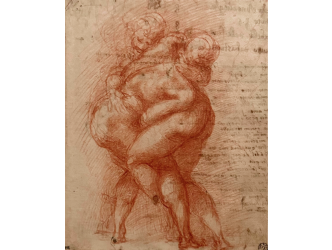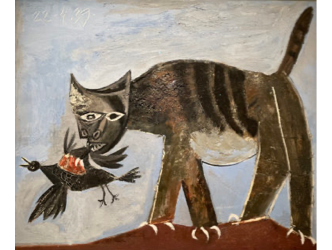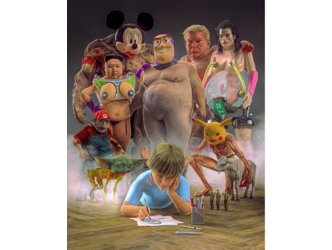But in the meantime in Brittany, 15km from Concarneau, a small traditional fishing port became courtesy of Gauguin a pilgrimage site for painters with mystical tendencies. They all made the journey to Pont-Aven. ‘It was in Pont-Aven – not in Paris or anywhere else – that Gauguin became Gauguin, the father and grandfather of modes of feeling and utterance that have counted for a great deal in the art of our century,’ wrote the art critic John Russell in The New York Times in 1986.
On 31 March, Christie’s is organising a relatively modest sale in Paris (45 works estimated in the region of a million euros) originating, as the catalogue states, from a ‘private European collection’ and which reveals this fascination for the small Breton town. Going under the hammer will be the last remaining pieces from the most famous Pont-Aven School collection, assembled over the course of a lifetime by Samuel Josefowitz.
This businessman who lived in Lausanne and passed away in 2015 had already sold a significant number of artworks to the Indianapolis Museum – 17 paintings and 84 prints in total, fetching $30 million in 1998. The passionate man also donated his entire archives documenting the school to the Pont-Aven Museum.
This local museum, which tells the history of this loose movement that Gauguin steered between 1889 and 1894, will reopen on 26 March.
The Christie’s auction contains only one artwork by the school’s major figure: The Tahitian Woman, a drawing in sanguine estimated at 70,000 euros.
It depicts a young unclothed woman as a goddess, surrounded by a halo. On his second trip to Pont-Aven in February 1888, when he stayed at the famous auberge Gloanec , Gauguin wrote to his wife, ‘I love Brittany. I find it savage, primitive. When my boots reverberate on this granite earth I hear the muted, matt and powerful tone that I seek in painting.’
In 1888 Paul Serusier (1867-1927) met Gauguin in Pont-Aven and enjoined him to be his teacher. For his friends in Paris, the future Nabis group, Serusier painted The Talisman, which is today displayed in the Musée d’Orsay. An oil on canvas, it’s an array of patches of colour, which reveals how to paint a landscape.
Christie’s is offering a Serusier from 1892, Little Breton Woman with Lily Pot. It’s a remarkable symbolist canvas whose shapes are outlined in black and in which the plant is developed as a decorative motif (estimated value: 60,000 euros). Gauguin would later confide to the Nabi painter Maurice Denis (1870- 1943): ‘I wanted to defy everything, liberate the new generation in some way or other.’ Fittingly the sale includes a canvas by Maurice Denis from 1891 titled The Orphans depicting a gathering of Breton girls in lace headdresses (estimated value: 130,000 euros). The sale also contains names not usually associated with the Pont-Aven school such as one of Gauguin’s earliest allies, Charles Laval (1862-1894). Strolling Bretons, in which there is a slight hint of Van Gogh, is considered ‘Laval’s masterpiece’ according to Christie’s expert Anika Guntrum. It is estimated in the region of 50,000 euros.
Support independent news on art.
Your contribution : Make a monthly commitment to support JB Reports or a one off contribution as and when you feel like it. Choose the option that suits you best.
Need to cancel a recurring donation? Please go here.
The donation is considered to be a subscription for a fee set by the donor and for a duration also set by the donor.





